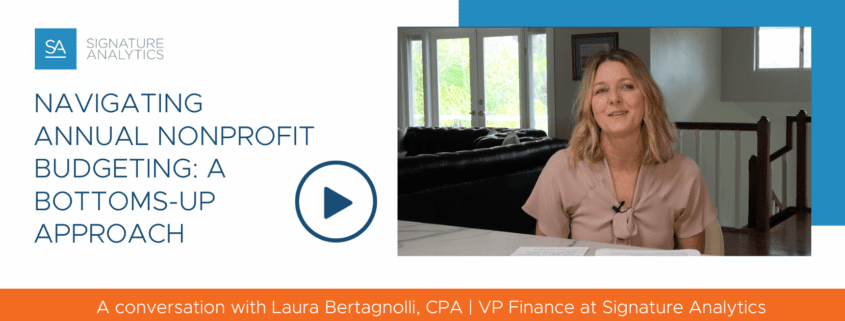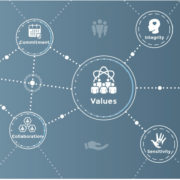Navigating Annual Nonprofit Budgeting: A Bottoms-Up Approach
Annual budgeting can often feel like a recurring whirlwind that leaves nonprofit teams feeling overwhelmed. The process seems to come around faster than expected, and it’s not uncommon to hear collective sighs of “Here we go again.”
However, the key to successful budgeting lies in getting the right people involved and embracing a “bottoms-up” approach.
Watch the video below to learn more:
Empowering Stakeholders with “Bottoms-Up” Budgeting
The success of your nonprofit’s annual budgeting process depends on active involvement from those who possess the most accurate and detailed information. This is where the concept of “bottoms-up” budgeting comes into play. Rather than crafting the budget in isolation within the finance department, the strategy begins by engaging program managers, development teams, and operations staff.
“The bottoms up approach with budgeting provides the most accurate information…Your plan is only as good as the information that you’ve put into it.”
The success of your nonprofit’s annual budgeting process depends on active involvement from those who possess the most accurate and detailed information. This is where the concept of “bottoms-up” budgeting comes into play. Rather than crafting the budget in isolation within the finance department, the strategy begins by engaging program managers, development teams, and operations staff.
“The bottoms up approach with budgeting provides the most accurate information…Your plan is only as good as the information that you’ve put into it.”
Ownership and Accuracy Go Hand in Hand
When key stakeholders actively participate in the budgeting process, they take ownership of the budget. They understand the intricacies of their departments and can provide insights that lead to a more accurate representation of future expenses. This ownership ensures that the budget genuinely reflects the needs and expectations of each department, enhancing its overall accuracy.
The Training Component
However, involving stakeholders isn’t just about assigning them budgeting tasks and expecting them to deliver. It’s essential to provide training and support to help them understand how to translate their departmental knowledge into financial formats. Sitting down with budget managers one-on-one to guide them through the process can help unlock the valuable knowledge they possess.
Creating a Structured Timeline
To streamline the annual budgeting process, it’s crucial to establish a well-defined schedule. This timeline should span approximately four months, allowing for comprehensive planning and collaboration. It’s during this period that various check-ins and events occur to ensure that all budget components align seamlessly.
Culminating in Board Approval
The journey towards creating an accurate and effective budget culminates in the presentation of a financial package to the board of directors. The goal is to obtain their approval before the start of the fiscal year, giving your nonprofit a solid foundation for the year ahead.

Zero-Based Budgeting vs. Flexibility
In the nonprofit world, there’s often a desire for budgets to align perfectly, where revenues and expenses meet at zero. This approach is known as zero-based budgeting. However, it’s essential to understand that this ideal scenario doesn’t always reflect the complexities of nonprofit finances.
Surpluses and Deficits: Part of the Plan
In reality, having a surplus doesn’t mean you’ve over-budgeted, but rather that you’re reinvesting in your organization’s mission. Surpluses can be used to bolster reserves, which can come in handy during challenging years. Conversely, a deficit in one year doesn’t equate to financial mismanagement if there are reserves in place to cover it.
The Unpredictable Nature of Giving
Nonprofit finances are affected by fluctuations in donor contributions. Some years may see surges in support, such as during the peak of the COVID-19 pandemic, while others might require drawing from reserves. The key lies in maintaining healthy reserve balances and having a financial runway that safeguards your organization’s sustainability.
In conclusion, nonprofit budgeting doesn’t have to be a stressful and unpredictable process. By embracing the “bottoms-up” approach and acknowledging the nuances of nonprofit finances, you can develop a more accurate, resilient, and adaptable budget that positions your organization for long-term success.
How Signature Analytics Can Help Your Nonprofit
Signature Analytics’ nonprofit accounting services help you make financial decisions based on the highest quality accounting practices, while our day-to-day outsourced accounting teams implement the highest quality donor and government accounting standards.
For additional assistance with cash flow management, developing detailed nonprofit budgets, and audit support, contact Signature Analytics today.









